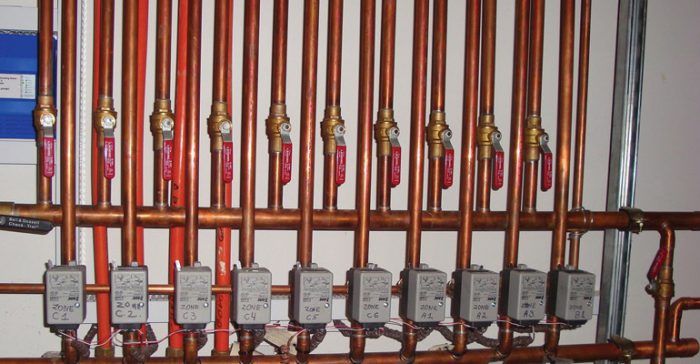Hydronic Zoning Offers Exceptional Comfort, Versatility
ACHR News, March 21, 2016. Image credit: Caleefi S.P.A.
In forced-air systems, zoning offers a way to control the indoor environment in several different areas throughout the home in order to meet the occupants’ comfort needs. Likewise, hydronic zoning grants residents control over the temperatures in their living spaces while saving energy in the long run.
BENEFITS OF HYDRONIC ZONING
More efficient pumps allow contractors to design new or retrofit systems that can precisely meet the heating load in each zone of the home. “When hydronic zoning is executed well, you can do it on very low amounts of electricity,” Siegenthaler said. “I could heat a 2,500-square-foot house on a very cold day on 25 W of electricity.” [bctt tweet=”Heating a 2,500-square-foot house on a very cold day on 25 W of electricity with hydronic zoning.”]
Hydronic zoning is effective “because it allows a residential heating system to run at its most energy-efficient level by providing the right amount of heat to provide occupant comfort only in the zones being used,” said Andy Januszewski, marketing manager, Armstrong Fluid Technology. “Most new residential hydronic systems are designed with zoning.”
IN THE ZONE
There are a few options for zoning an existing hydronic system, Siegenthaler said. “You can zone with thermostatic radiator valves, which have been around for several decades and go onto a radiator or baseboard, and instead of using an electric motor to operate the valve mechanism, they have a thermostatic cartridge.”
If it’s a radiant system, zoning can be accomplished using manifold valve actuators, he added. “An actuator is basically a motor that screws onto each circuit of the manifold. So, if you had a manifold with six circuits, you’d screw six of these on, and you could wire those to thermostats. Each room would now have its own thermostat and could independently control each circuit on that manifold.”
